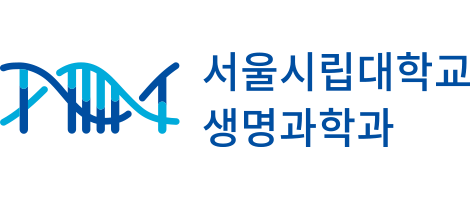[일반세미나] 2025학년도 2학기 생명과학과 특별 세미나
- -연사 : 이남규 교수
- -연제 : When Nutrients Become New Treatment: Insight from Selenium Metabolism
- -일시 : 2025.09.08 (월) 10:30 ~
- -장소 : 시대융합관-B121호
- 1. 2025 서울시립대 세미나 abstract_이남규.docx (14.4 KB)
- 2. Namgyu Lee CV.pdf (295.4 KB)
When Nutrients Become New Treatment: Insight from Selenium Metabolism
Unlike plants, animals must obtain essential nutrients from their diet to survive. These nutrients are metabolized in the body and within cells to generate energy, build macromolecules, regulate redox homeostasis, and more. With the advent of cutting-edge metabolomics and functional genomics tools, it has become clear that many nutrients play roles far beyond their classical metabolic functions.
In this seminar, I will present our recent findings on selenium—an essential micronutrient—as a prime example of how dietary components can directly regulate cell fate. Selenium is classically known for its antioxidant properties, as it is required for the synthesis of selenocysteine, which is incorporated into 25 selenoproteins, including glutathione peroxidases and thioredoxin reductases. However, our recent study (Lee et al., Nature Metabolism, 2024) revealed that selenium itself—specifically hydrogen selenide, a metabolic intermediate in the selenocysteine biosynthesis pathway—can protect cells from ferroptosis independently of selenoprotein synthesis. We found that selenide reduces Coenzyme Q10 via the mitochondrial enzyme SQOR, uncovering a novel non-canonical role of selenium metabolism in redox regulation.
Notably, selenium has a narrow safety margin, and its toxicity has been documented across plants, animals, and humans. In our previous work (Carles* & Lee* et al., Nature Metabolism, 2020; Lee et al., Oncogene, 2020), we demonstrated that cancer cells can be selectively poisoned by toxic forms of selenium through the disruption of detoxifying enzymes. However, the exact mechanism of selenium-induced toxicity remained unclear. Using unbiased CRISPR pooled screening and metabolomics, we have now established a new model for selenium toxicity, which will be discussed in this presentation (manuscript under revision).
Finally, I will highlight how these mechanistic insights offer new avenues for treating selenium poisoning and developing selenium-based anticancer strategies. This work illustrates how nutrients, when examined through the lens of advanced technologies, can reveal unexpected biological functions and open up innovative possibilities for disease treatment.
- 1. 2025 서울시립대 세미나 abstract_이남규.docx (14.4 KB)
- 2. Namgyu Lee CV.pdf (295.4 KB)



